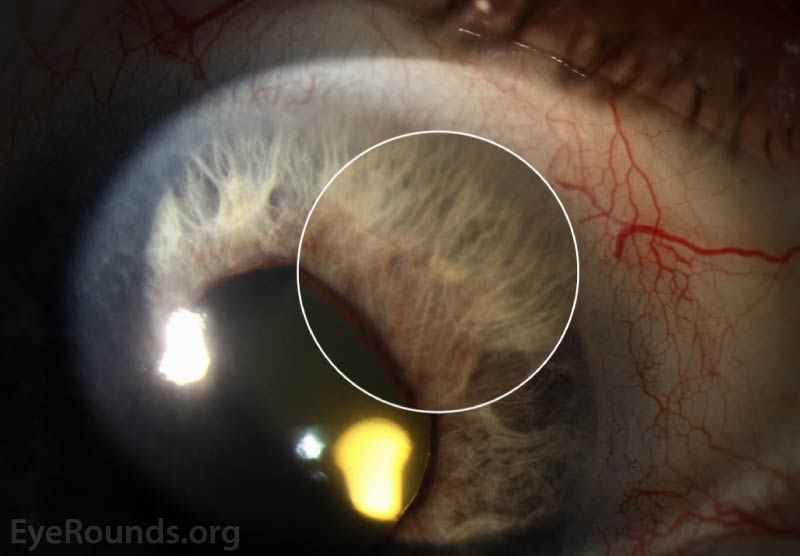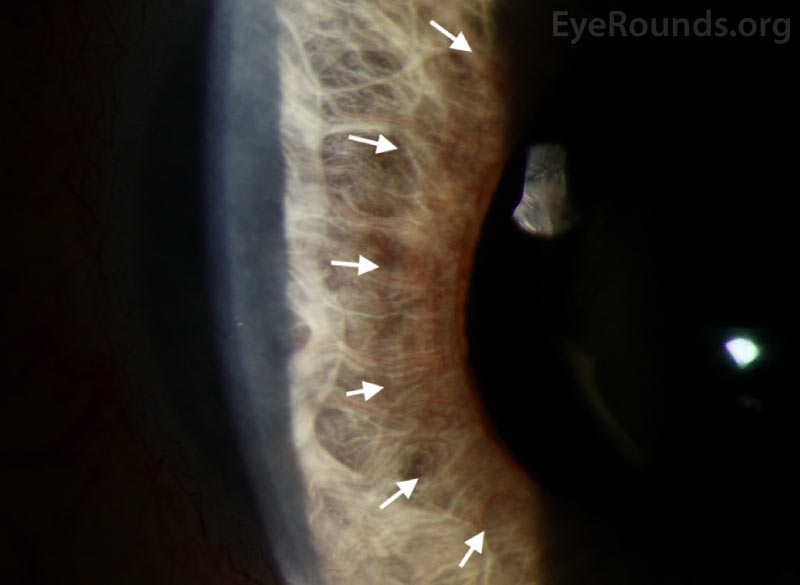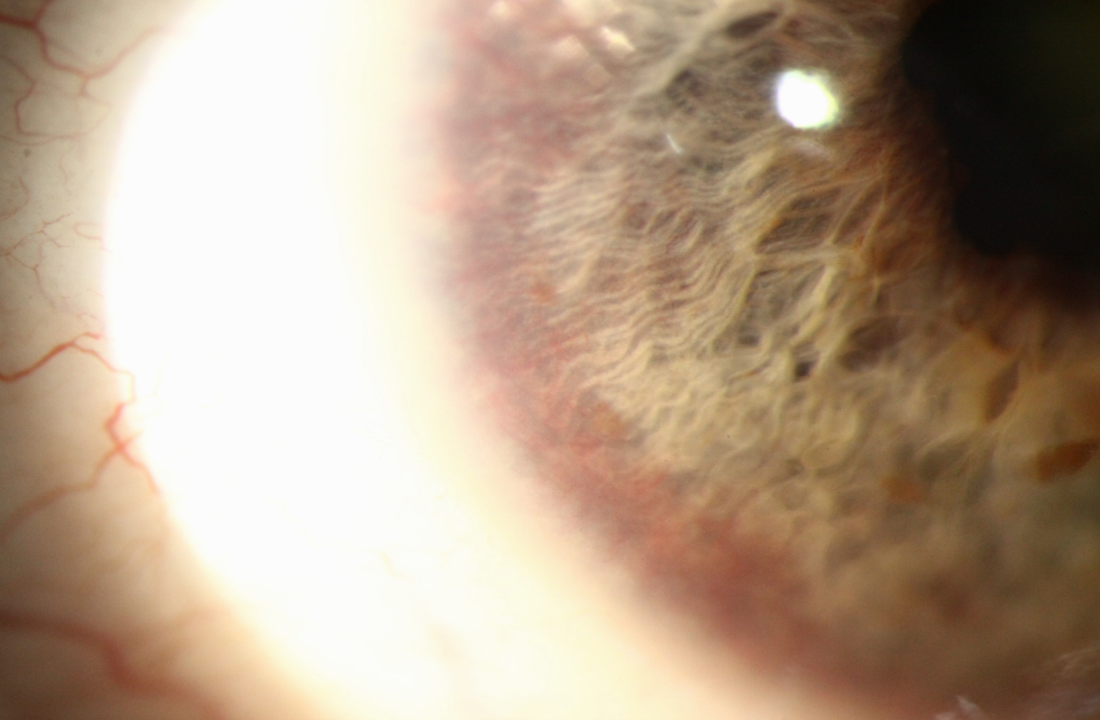
This patient initially presented with neovascularization of the iris (NVI), or rubeosis iridis, and neovascular glaucoma (NVG) that occurred three months after a central retinal artery occlusion (CRAO). The appearance of the NVI in this patient is subtle as he has undergone intravitreal injections of bevacizumab for neovascular glaucoma. Although much less common than in central retinal vein occlusions, the incidence of NVI has been shown to be about 10.9% after a CRAO.


This is a 65-year-old woman with history of central retinal artery occlusion one month prior who presented with neovascular glaucoma. As displayed in the slit lamp images, she had dense inferior neovascularization of the angle accompanying her near 360-degree neovascularization of the iris.


Jung YH, Ahn SJ, Hong JH, et al. Incidence and Clinical Features of Neovascularization of the Iris following Acute Central Retinal Artery Occlusion. Korean J Ophthalmol. 2016;30(5):352-359. doi:10.3341/kjo.2016.30.5.352

Ophthalmic Atlas Images by EyeRounds.org, The University of Iowa are licensed under a Creative Commons Attribution-NonCommercial-NoDerivs 3.0 Unported License.